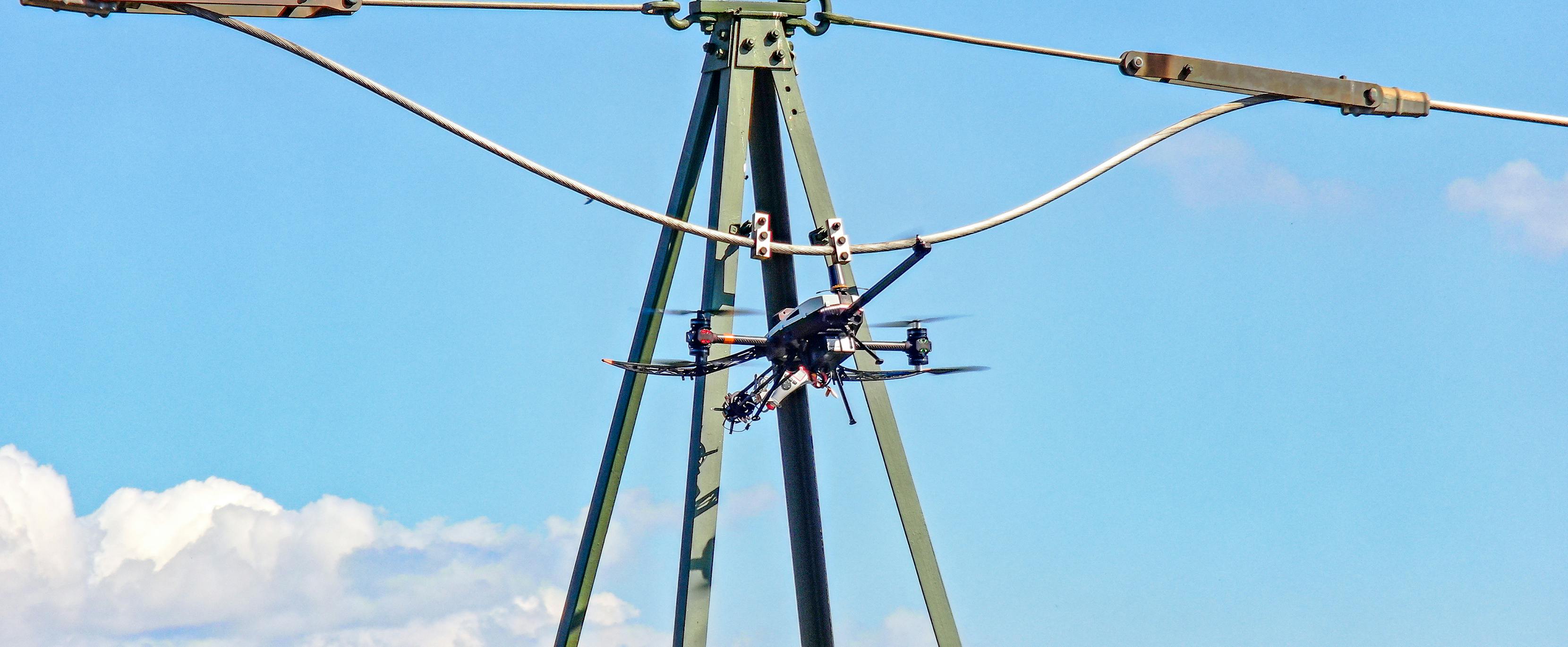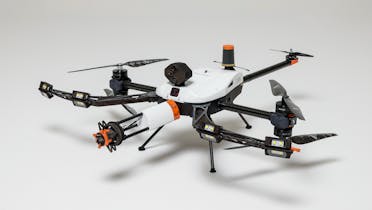
Suddenly there is a shrill buzzing sound, like a giant wasp. In the past, we were not familiar with this sound, but today we know that it is a drone. Drones have become almost indispensable for certain tasks. Where once a helicopter was used, today small, agile and energy-efficient drones are often the first choice. It is hard to imagine nature documentaries without drone footage, and drones are often used in feature films as well. Nowadays, even wedding parties want group pictures taken by a drone. But what else can a drone do besides taking photos and making films? And where can Swissgrid use drones now and in the future?
The little helpers are already frequently used as flying eyes at Swissgrid. A pylon or conductor can be checked for damage much more easily without the need for an installer to climb the pylon and for the line to be switched off. This allows the person responsible for the line to record damage single-handedly for more precise analyses of pylons, conductors and insulators. With the help of the photos, they can define the necessary repair measures. Swissgrid’s foresters use drones to obtain an overview of the trees that are getting too close to the line using before and after visualisations. The behaviour of forest edges after felling can also be assessed. The photo and film material also enables them to emphasise the importance of forestry work to forest owners.
Yet drones are much more than flying cameras. In the future, they could be used for corrosion measurements on pylons. Likewise, thanks to drones, it is possible to update existing digital models of the line environment using laser scanning data. And if we stretch our imagination even further, perhaps drones will one day be able to take off autonomously in the event of a line failure to quickly find the cause.
Drones instead of binoculars
In a pilot project, Swissgrid used drones for line inspections. An annual inspection is conducted to search the line and pylons for damage, usually with simple tools such as binoculars. Drones can now take photos along a precisely defined flight path from the exact same viewpoints each time. An algorithm then compares the photos with other or older images and detects anomalies. For example, if rust is visible on a pylon element, the algorithm recognises that the image is different from a rust-free pylon part and reports the damage. If the inspection is carried out in the same way via drone over several years, it is possible to determine whether anything has changed on the pylon by comparing the most recent images with those of previous years.





